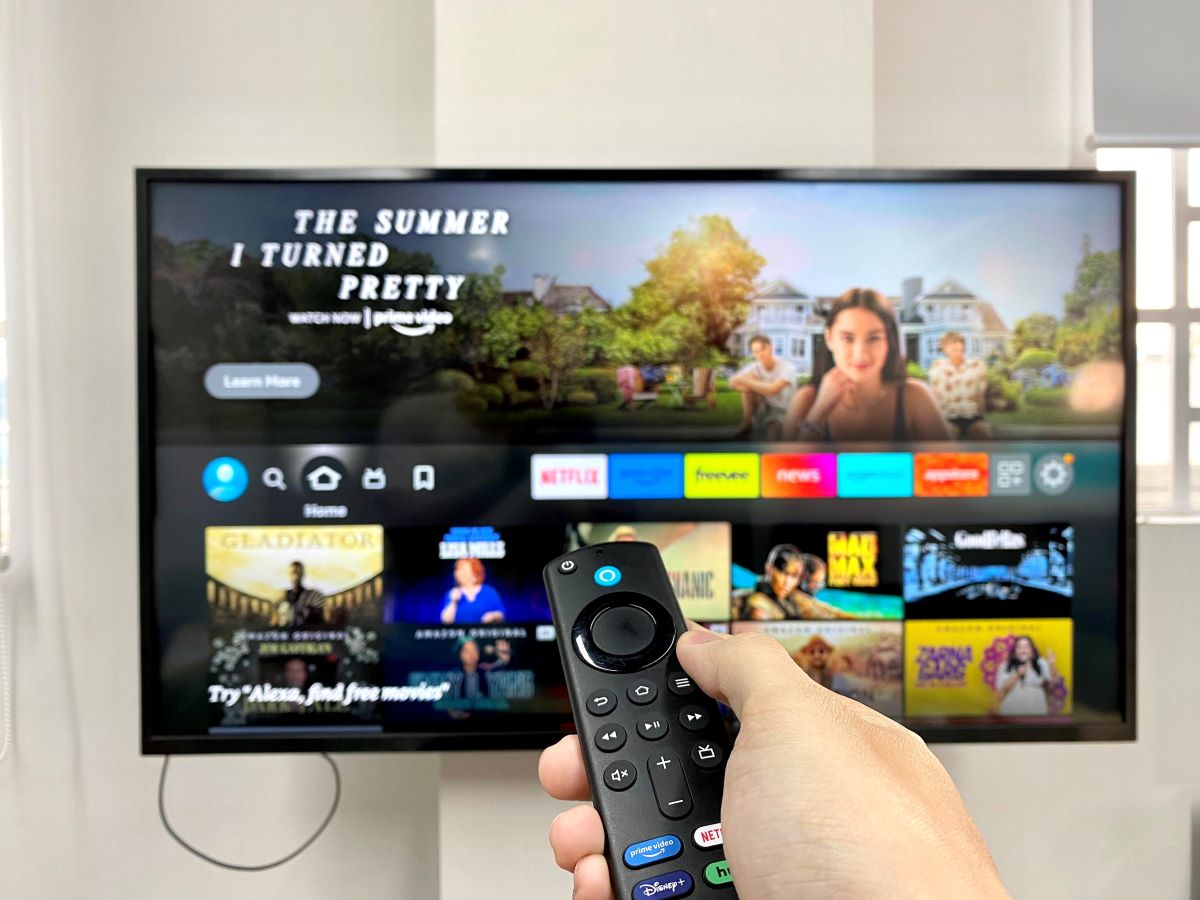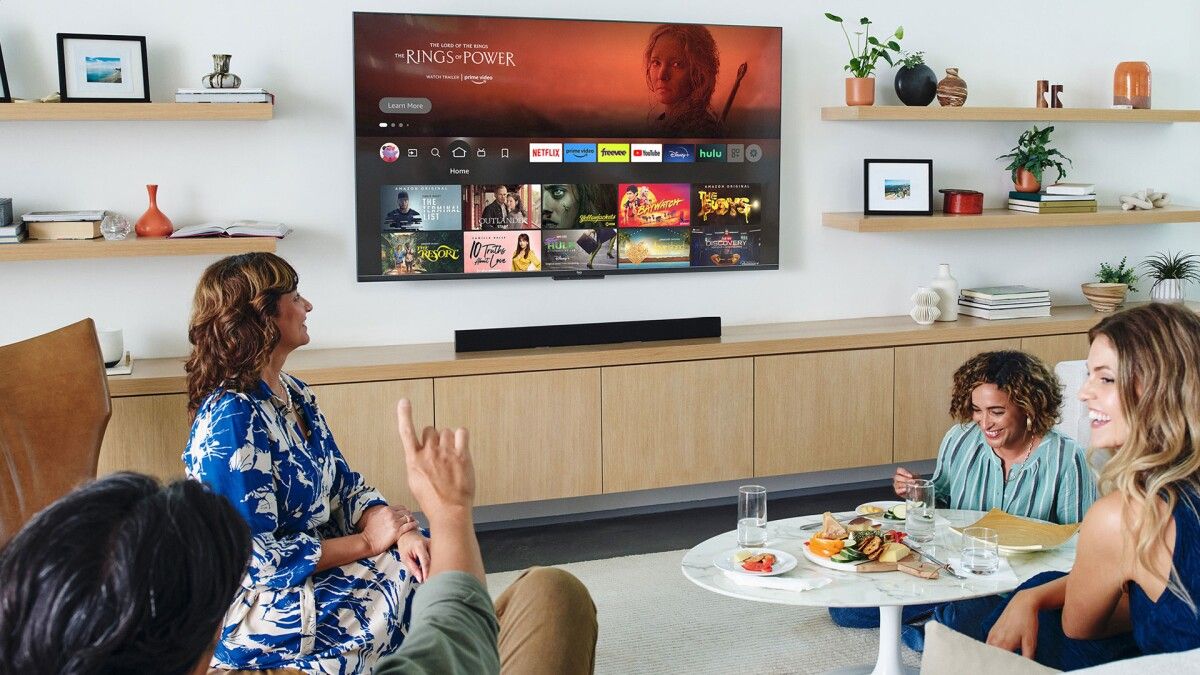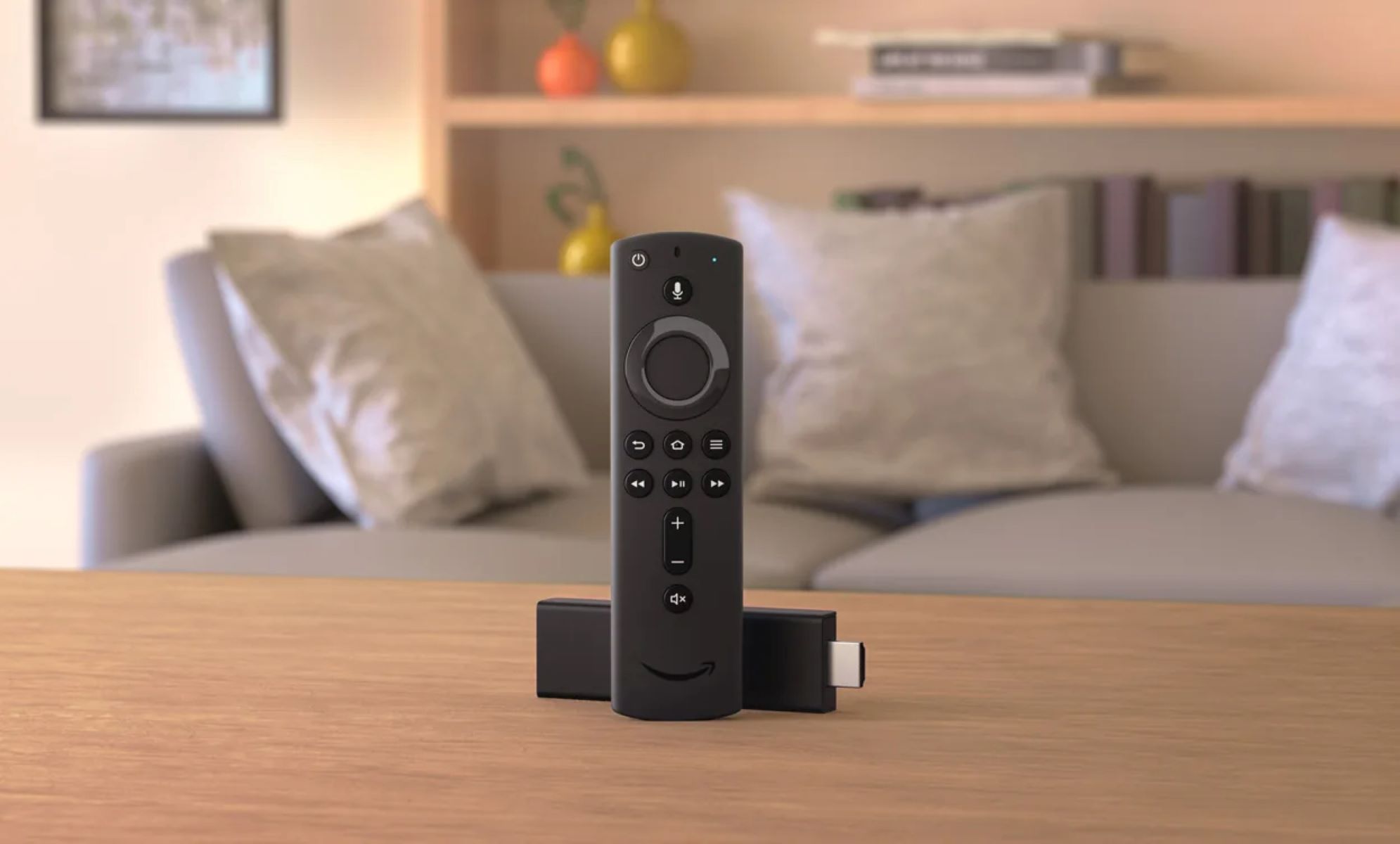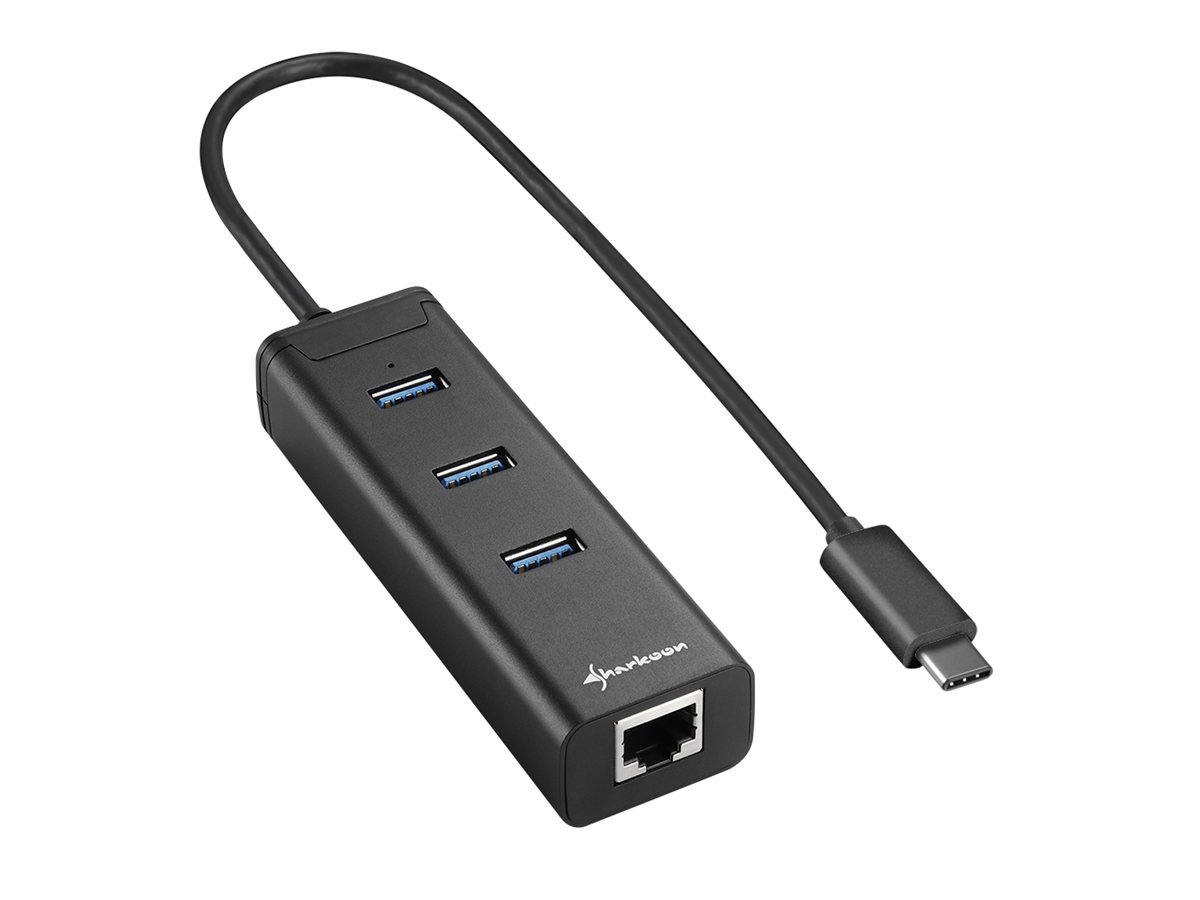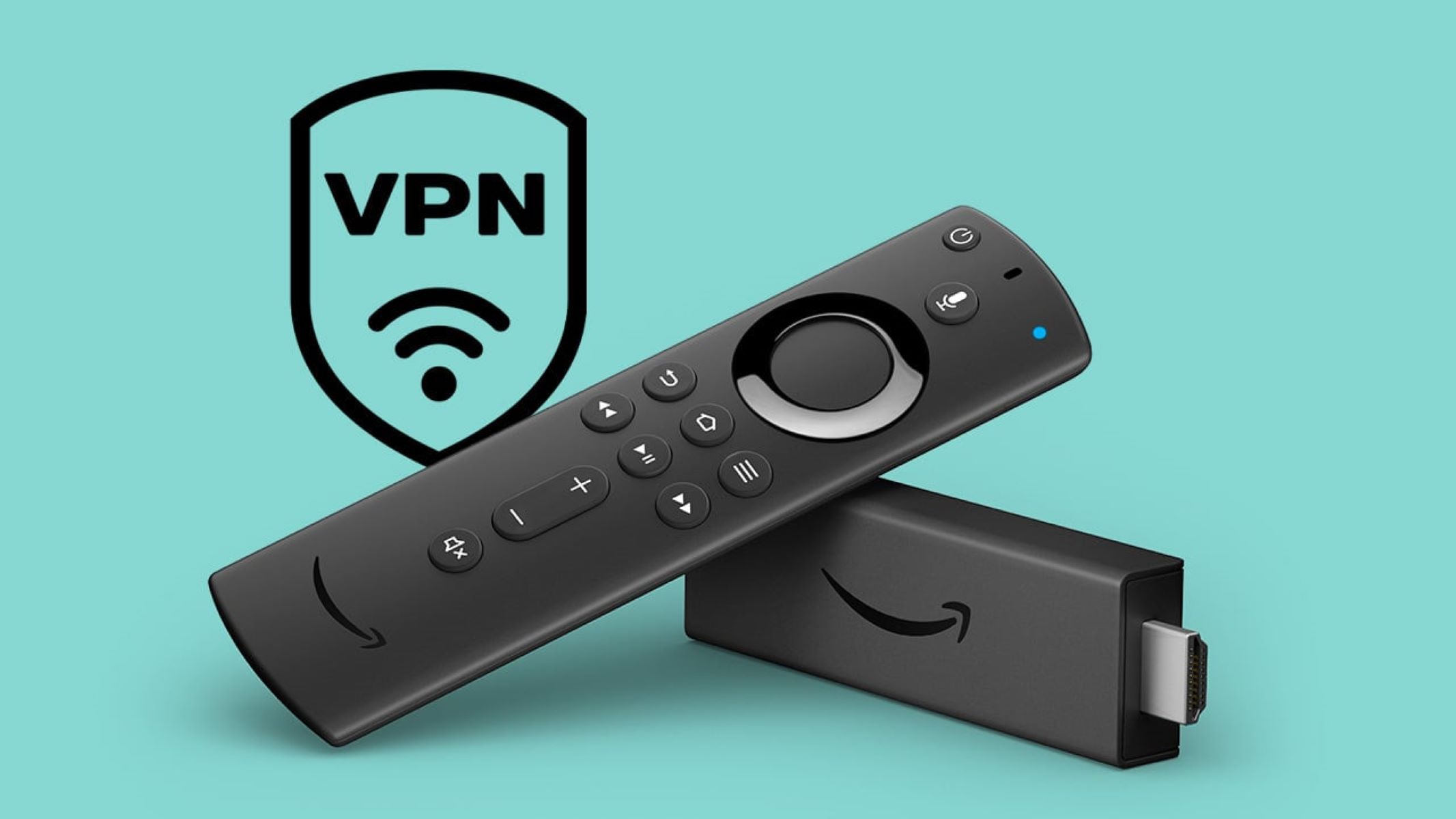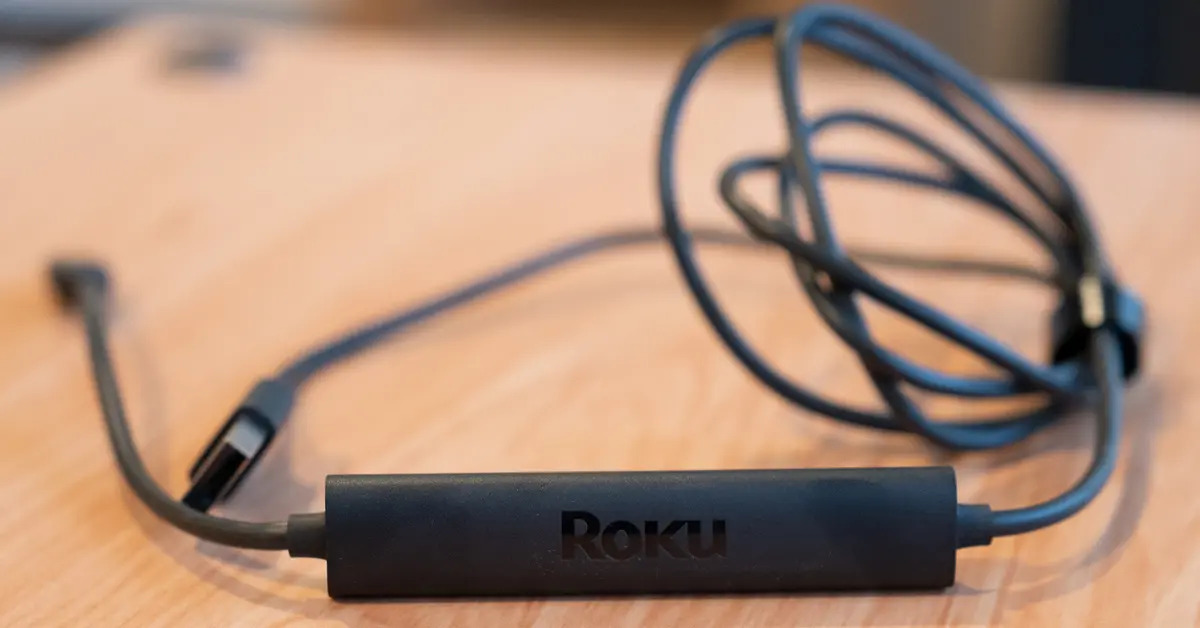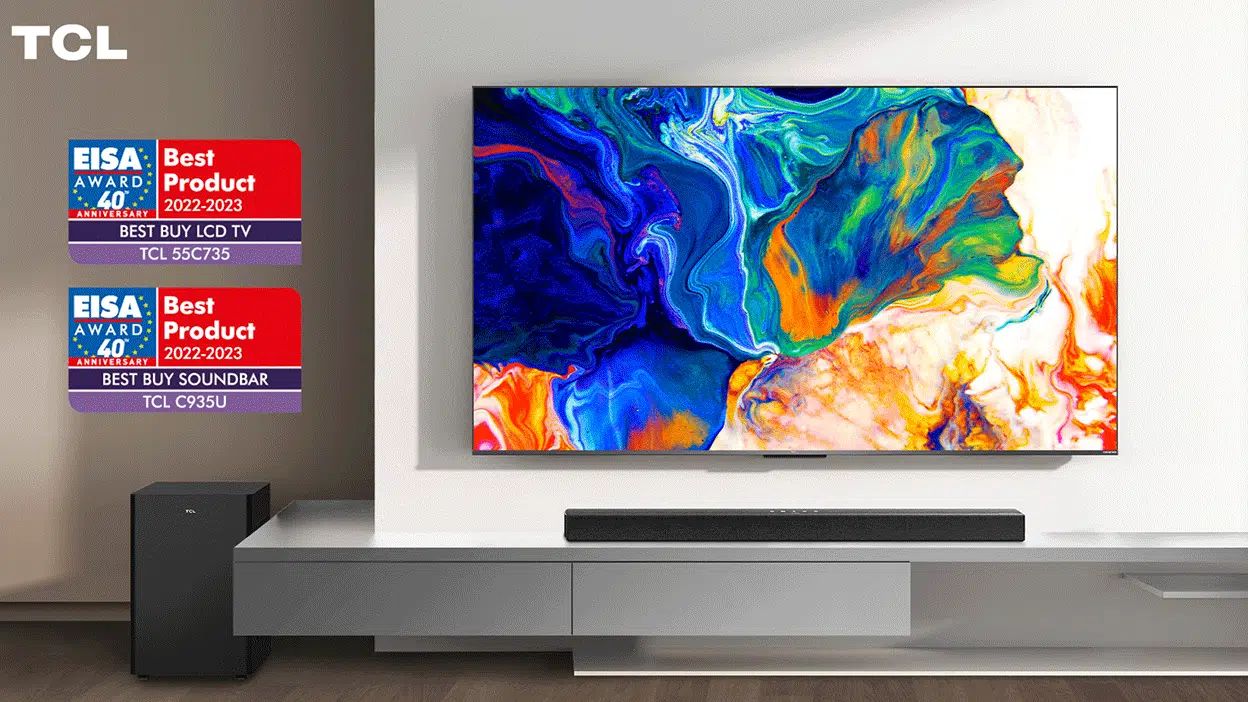Introduction
Streaming has become an increasingly popular way to consume media, allowing users to access a wide range of movies, TV shows, and other content on-demand. While smart TVs are equipped with built-in streaming capabilities, older non-smart TVs may require additional devices to access streaming services. One such device is a Firestick, a small device that plugs into the HDMI port of a TV and enables streaming capabilities.
If you have a non-smart TV and are wondering how a Firestick works, you’ve come to the right place. In this article, we will explore the functionalities of a Firestick, how to set it up on a non-smart TV, and how to start streaming your favorite content.
A Firestick is a streaming media player developed by Amazon. It is a compact device that connects to your TV’s HDMI port and allows you to access a vast array of streaming content, including popular streaming services like Netflix, Hulu, and Amazon Prime Video. The Firestick runs on the Android operating system and comes with a user-friendly interface that makes it easy to navigate and find the content you want to watch.
The Firestick relies on a stable internet connection to stream content seamlessly. It connects to your home Wi-Fi network, allowing you to access a variety of streaming apps. It also has its own remote control, which can be used to navigate the interface, control playback, and perform other functions.
Setting up a Firestick on a non-smart TV is a relatively simple process that requires a few steps. In the next section, we will walk you through the setup process and get you ready to start streaming.
What is a Firestick?
A Firestick is a popular streaming media player developed by Amazon. It is a small device that connects to the HDMI port of your TV, transforming it into a smart TV capable of streaming a wide range of content. The Firestick runs on the Android operating system, providing users with access to various streaming apps, including popular services like Netflix, Hulu, and Amazon Prime Video.
With a Firestick, you can enjoy a world of entertainment right from the comfort of your living room. It eliminates the need for cable or satellite TV subscriptions by offering a vast library of movies, TV shows, live sports, documentaries, and more, available on-demand. The Firestick also enables users to access music streaming services, browse the internet, and even play games.
One of the key advantages of a Firestick is its portability. Due to its compact size, it can be easily carried and connected to any TV with an HDMI input, whether you’re at home or on the go. This makes it a convenient option for frequent travelers who want to enjoy their favorite shows and movies while away from home.
The Firestick comes with a dedicated remote control that allows you to navigate the interface, search for content, control volume, and perform various other functions. In addition to the remote control, you can also control the Firestick using a smartphone or tablet through the Amazon Fire TV app.
One of the standout features of a Firestick is its voice control capabilities. The latest versions of the Firestick come with a built-in voice assistant, Alexa, which allows you to control the device and perform tasks simply by using your voice. You can ask Alexa to search for a specific movie, play a particular TV show, adjust the volume, or even control smart home devices that are compatible with Alexa.
Overall, a Firestick is a versatile and convenient device that can turn any non-smart TV into a powerhouse of entertainment. With its extensive library of content, user-friendly interface, and advanced features like voice control, it has become a popular choice for streaming enthusiasts worldwide.
How does a Firestick work?
A Firestick works by connecting to your TV’s HDMI port and transforming it into a smart TV capable of streaming a wide variety of content. It runs on the Android operating system, providing users with access to a plethora of streaming apps and services.
When you plug the Firestick into your TV’s HDMI port and connect it to a power source, it automatically boots up and displays the Firestick interface on your TV screen. From there, you can navigate through the various menus and options using the included remote control or the Fire TV app on your smartphone or tablet.
Once you’ve set up the Firestick and connected it to your home Wi-Fi network, you can begin streaming content. The Firestick connects to the internet and allows you to access popular streaming services like Netflix, Hulu, and Amazon Prime Video, as well as other apps for music, sports, news, and more.
When you select a streaming app or service, the Firestick sends a request to the service’s servers over your internet connection. The service then responds by sending the video or audio data back to the Firestick, which displays it on your TV screen and plays the content in real-time.
The Firestick’s hardware, including its processor and memory, plays a crucial role in providing a smooth streaming experience. It has a powerful processor that ensures quick load times and smooth playback of high-definition content. Additionally, the Firestick supports various video and audio formats, allowing you to enjoy your favorite shows and movies in stunning clarity and audio quality.
The Firestick also comes with built-in storage space, allowing you to download and store apps, games, and other content directly on the device. This enables you to customize your streaming experience and access your favorite apps without the need for additional devices.
Furthermore, the Firestick offers features like parental controls, screen mirroring, and the ability to pair with Bluetooth devices such as headphones or speakers. These features enhance the versatility and convenience of the Firestick, making it a desirable streaming solution for a wide range of users.
In summary, a Firestick works by connecting to your TV and leveraging its hardware and software to provide seamless streaming of a wide variety of content. Whether you want to watch movies, TV shows, live sports, or listen to music, the Firestick offers a user-friendly and feature-rich platform to satisfy all your streaming needs.
Setting up a Firestick on a non-smart TV
If you have a non-smart TV and want to enjoy the benefits of streaming, setting up a Firestick is a simple process that can be done in a few easy steps.
The first thing you’ll need is a Firestick device, which you can purchase online or from an electronics store. Once you have the device, follow these steps to set it up on your non-smart TV:
- Identify the HDMI port: Locate the HDMI port on your TV. It is usually located on the back or side of the TV, labeled as “HDMI”.
- Connect the Firestick: Connect one end of the Firestick to the HDMI port on your TV. Ensure that it is firmly inserted.
- Power the Firestick: Use the provided USB cable to connect the other end of the Firestick to a power source. You can plug it into a USB port on your TV, or use the included power adapter to connect it to a wall outlet.
- Select the input/source: On your TV remote, select the corresponding input or source button to switch to the HDMI input where you connected the Firestick. This may be labeled as “HDMI 1”, “HDMI 2”, or similar.
- Set up the Firestick: Once your TV displays the Firestick interface, follow the on-screen instructions to select your language, connect to your Wi-Fi network, and sign in to your Amazon account or create a new one, if necessary.
- Update the Firestick: After the initial setup, it is recommended to check for updates. Go to Settings > My Fire TV > About > Check for System Update. If there’s an update available, follow the prompts to install it.
That’s it! Your Firestick is now set up on your non-smart TV, ready to be used for streaming your favorite content. You can use the remote control or the Fire TV app on your smartphone to navigate through the interface, search for content, and enjoy a world of entertainment.
It’s important to note that some older non-smart TVs may not support the HDMI input required for a Firestick. In such cases, you may need an HDMI to AV converter, which allows you to connect the Firestick to the TV’s RCA or AV input. Make sure to check the compatibility of your TV before purchasing a Firestick device.
Moreover, if you encounter any issues during the setup process or need further assistance, refer to the user manual that comes with the Firestick or visit the official Amazon Fire TV support website for troubleshooting tips and guidance.
Now that you’ve successfully set up your Firestick on your non-smart TV, it’s time to explore the vast world of streaming and enjoy all the content available at your fingertips.
Connecting the Firestick to the TV
Connecting your Firestick to your TV is a straightforward process that requires a few simple steps. Follow these instructions to ensure a proper and secure connection:
- Locate the HDMI port: Identify the HDMI port on your TV. It is usually located on the back or side of the TV and labeled as “HDMI”.
- Insert the Firestick: Take one end of the Firestick and firmly insert it into the HDMI port on your TV. Make sure it is fully connected.
- Power the Firestick: Use the included USB cable to connect the other end of the Firestick to a power source. You have two options:
- USB port on the TV: Many TVs have USB ports that can provide power to devices. If your TV has a USB port available, you can insert the USB end of the cable into the USB port on your TV. This will power the Firestick directly from the TV.
- Power adapter: If your TV does not have a USB port or you prefer a separate power source, you can use the included power adapter. Insert the USB end of the cable into the power adapter, and then plug the adapter into a wall outlet.
- Switch to the appropriate input: Use your TV remote to navigate to the input or source menu. Select the HDMI input where you connected the Firestick. The input may be labeled as “HDMI 1,” “HDMI 2,” or similar.
- Turn on the TV: Power on your TV and wait for it to recognize the Firestick. Once the Firestick is detected, your TV screen will display the Firestick interface.
That’s it! You have successfully connected your Firestick to your TV. The HDMI connection provides both the audio and video signals, ensuring a high-quality streaming experience. The power source, whether from the TV’s USB port or the power adapter, ensures the Firestick receives the necessary power to function properly.
If your Firestick does not appear on the screen or you encounter any issues, ensure that the HDMI connection is secure and that the TV is set to the correct input. You can also try unplugging both ends of the HDMI cable and reconnecting them. If the issue persists, refer to the troubleshooting section in the Firestick user manual or visit the official Amazon Fire TV support website for further assistance.
Now that your Firestick is successfully connected to your TV, you can proceed with the setup process and start enjoying the vast array of streaming content available to you.
Powering on the Firestick
Once you have successfully connected your Firestick to the TV, the next step is to power on the device. Here’s how to do it:
- Ensure the Firestick is properly connected: Double-check that the Firestick is securely connected to the HDMI port on your TV and that the power source (either the TV’s USB port or the power adapter) is properly plugged in.
- Locate the power button: On the Firestick remote control, look for the power button. It is usually located at the top of the remote, indicated by a power icon.
- Press and hold the power button: Press and hold down the power button for a few seconds. This will initiate the powering on process for the Firestick.
- Release the power button: After holding down the power button, release it. The Firestick will start booting up, and you will see the Amazon logo appear on your TV screen.
- Wait for the setup screen: Once the Firestick has finished booting up, you will be prompted with the setup screen on your TV. Follow the on-screen instructions to proceed with the setup process, including connecting to your Wi-Fi network and signing in to your Amazon account.
It’s important to note that the Firestick will take a moment to initialize before displaying the setup screen. The duration may vary depending on your specific model and internet connectivity.
If you have trouble turning on the Firestick or the setup screen does not appear, ensure that the power source is functional and that the TV is powered on. You may also try disconnecting the power source from the Firestick, waiting for a few seconds, and then reconnecting it to reset the device.
Once the Firestick is powered on and you have completed the setup process, you are ready to start exploring the various features and streaming options available to you. Use the Firestick remote control or the Fire TV app on your smartphone to navigate through the menus, browse content, and enjoy a wide range of entertainment from popular streaming services and apps.
If you encounter any issues during the power-on process or need further assistance, refer to the Firestick user manual or visit the official Amazon Fire TV support website for troubleshooting tips and guidance.
Now that you have successfully powered on your Firestick, it’s time to customize your streaming experience and start enjoying the wide array of content at your fingertips.
Configuring the Firestick
After powering on your Firestick, the next step is to configure the device to personalize your streaming experience. Here’s how you can do it:
- Select your preferred language: On the setup screen, choose your desired language from the list of options. Use the Firestick remote control’s navigation buttons to scroll through the available languages and press the select button to confirm your choice.
- Connect to your Wi-Fi network: Follow the on-screen prompts to connect your Firestick to your home Wi-Fi network. Select your network from the list of available networks, enter the password if required, and wait for the Firestick to establish a connection. A successful connection is indicated by a checkmark next to your network name.
- Sign in to your Amazon account: If you already have an Amazon account, enter your email address and password to sign in. If you don’t have an Amazon account, select “Create Account” to create a new one. Follow the on-screen instructions to complete the sign-in process.
- Set up parental controls (optional): If you have children or want to restrict certain content, you can set up parental controls. Choose a PIN code and select your desired content restrictions, such as blocking specific ratings or restricting purchases.
- Enable data collection (optional): Amazon may ask for your permission to collect data to improve your streaming experience. You can choose whether to enable or disable this feature based on your preferences.
- Customize privacy settings (optional): In the privacy settings, you can choose whether you want to share information, including your device usage and app installation data, with Amazon for personalized recommendations and targeted ads.
- Set the display and audio settings: Once you’ve completed the initial setup, you can fine-tune your display and audio settings. Access the settings menu by going to the Firestick’s home screen, selecting “Settings,” and then choosing “Display & Sounds.” From there, you can adjust settings related to resolution, screen mirroring, audio output, and more.
By configuring these settings, you can customize your Firestick to suit your preferences and ensure an optimized streaming experience. However, it’s worth noting that some settings may require further exploration or may be specific to certain Firestick models.
If you encounter any difficulties while configuring your Firestick or have questions about specific settings, refer to the user manual provided with your device or visit the official Amazon Fire TV support website for detailed instructions and support.
Now that you have successfully configured your Firestick, you’re ready to dive into the world of streaming with personalized settings that align with your preferences and needs. Enjoy the vast selection of content and make the most out of your Firestick streaming experience!
Using the Firestick interface
Once you have configured your Firestick, you can start exploring and navigating the user-friendly interface. The Firestick interface provides easy access to a wide range of apps, settings, and streaming content. Here’s how to make the most out of the Firestick interface:
The Firestick interface is designed to be intuitive and user-friendly, allowing you to easily find and navigate through different features and content. Here are some essential tips for using the Firestick interface:
1. Home Screen: The Home screen is the starting point of the Firestick interface. From here, you can access various content categories like Movies, TV Shows, Apps, and more. Navigate through the categories using the remote control’s navigation buttons and press the select button to explore the selected category.
2. Main Menu: When you are on the Home screen, press the Home button on the remote control to access the main menu. Here, you will find options to search for specific content, access your recently used apps, and manage settings and preferences.
3. App Installation: The Firestick interface allows you to install and manage a wide variety of apps. Go to the Apps section to browse through the available apps or use the search function to find specific apps. Once you find an app of interest, select it and follow the on-screen prompts to install it onto your Firestick.
4. App Navigation: Once you have installed apps, you can navigate through them by going to the Apps section on the Home screen. Use the remote control’s navigation buttons to highlight an app, and then press the select button to open it. Within each app, you can navigate using the respective app’s interface or the Firestick remote control.
5. Search Function: The Firestick interface has a built-in search feature that allows you to quickly find specific movies, TV shows, actors, or directors. From the Home screen or main menu, select the Search option, and use the on-screen keyboard to enter your search query. The Firestick will display relevant results based on your search terms.
6. Settings and Preferences: Accessing the settings and preferences is essential for customization and fine-tuning your Firestick experience. From the main menu, select the Settings option to access various options like Display & Sounds, Network, Privacy, and more. Explore the settings to adjust audio and video output, manage network connectivity, and configure other preferences according to your liking.
The Firestick interface is designed to streamline your streaming experience and make it easy to discover and access your favorite content. Take some time to familiarize yourself with the interface and explore its features to make the most out of your Firestick.
If you encounter any difficulties navigating the Firestick interface or need assistance with specific features, consult the user manual or visit the official Amazon Fire TV support website for step-by-step instructions and troubleshooting guides.
Now that you are equipped with the knowledge of how to navigate the Firestick interface, you can immerse yourself in the world of entertainment and seamlessly access your favorite apps and streaming content.
Installing apps and streaming content
One of the key features of the Firestick is the ability to install a wide range of apps and stream your favorite content. With a vast library of streaming services and apps available, you can easily access and enjoy a variety of entertainment options. Here’s how to install apps and stream content on your Firestick:
1. App Installation: To install apps on your Firestick, navigate to the Apps section on the Home screen. Here, you can browse through popular apps or use the search function to find specific ones. Once you have found an app you wish to install, select it and click the “Get” or “Download” button. Wait for the app to download and install onto your Firestick.
2. Managing Apps: After installing apps, you can access and manage them from the Apps section on the Home screen. Use the remote control to highlight the app you want to open, and then press the select button. To remove or uninstall an app, navigate to the Apps section, press the menu button on the remote control, and select “Uninstall.”
3. Sign in to Streaming Services: Many apps require you to sign in with your respective streaming service accounts to access their content. Once you have installed an app, open it and use the on-screen prompts to sign in or create a new account. Sign in with your credentials to unlock the full range of content available on that particular streaming service.
4. Discovering and Streaming Content: With apps installed and signed in, you can begin exploring and streaming content. Open the app you want to use, navigate through its interface to find desired movies, TV shows, or other content. Use the remote control to select the content you want to watch and press the play button. Enjoy streaming your favorite content in high-quality resolution on your TV.
5. Using Alexa for Voice Commands: If you have a Firestick with Alexa support, you can use voice commands to search for content, control playback, and perform other functions. Simply press the microphone button on the Firestick remote control and speak your command, such as “Alexa, find romantic movies” or “Alexa, play the latest episode of my favorite show.”
It’s important to note that while many popular streaming services, such as Netflix, Hulu, and Amazon Prime Video, are readily available on the Firestick, others may require installation from external sources or through third-party app stores.
Additionally, some apps may require a subscription or rental fees to access their content. Make sure to familiarize yourself with the terms and conditions of each app and streaming service to ensure a seamless streaming experience.
If you encounter any issues while installing apps or streaming content, refer to the user manual or visit the official support website for troubleshooting tips and guidance.
Now that you know how to install apps and stream content on your Firestick, you can dive into an endless world of entertainment and enjoy a wide variety of movies, TV shows, and other streaming services right from the comfort of your home.
Troubleshooting common issues
While the Firestick is designed to provide a seamless streaming experience, you may encounter occasional issues that can disrupt your enjoyment. Fortunately, many common issues can be resolved with some simple troubleshooting steps. Here are some common issues you may encounter with your Firestick and how to troubleshoot them:
1. No video or audio: If you have no video or audio when using your Firestick, ensure the HDMI connection is secure and that the TV is set to the correct input. Try unplugging both ends of the HDMI cable and then reconnecting them. If the problem persists, try using a different HDMI cable or connecting to a different HDMI port on your TV.
2. Wi-Fi connectivity problems: If your Firestick is having trouble connecting to your Wi-Fi network, check that your network is working correctly and that the Firestick is within range. Restart your Firestick and router, and ensure you are entering the correct Wi-Fi password. You may also try connecting the Firestick to a different Wi-Fi network to determine if the issue lies with your home network.
3. App crashes or freezing: If an app on your Firestick keeps crashing or freezing, try clearing the app cache. Go to Settings > Applications > Manage Installed Applications, find the problematic app, and select “Clear cache.” If the issue persists, uninstall and reinstall the app. Alternatively, make sure your Firestick is running the latest software version by going to Settings > My Fire TV > About > Check for System Update.
4. Remote control not responding: If your Firestick remote control is not responding, first check that the batteries are correctly inserted and have sufficient charge. Ensure there are no obstructions between the remote and the Firestick. If the issue continues, try restarting the Firestick by disconnecting the power source and reconnecting it. If all else fails, consider replacing the batteries or getting a new remote.
5. Overheating: Extended use of the Firestick or poor ventilation can sometimes lead to overheating. To prevent this, make sure the Firestick has enough space around it for proper airflow. Ensure it is not obstructed by other devices or placed on heat-sensitive surfaces. If overheating persists, you may need to let the Firestick cool down before using it again or consider using an external cooling solution.
6. Slow performance: If your Firestick is running slow, try optimizing its performance. Close unused apps, clear cache and data for apps consuming too much memory, and make sure your Firestick is running the latest software version. You can also streamline the Firestick’s interface by removing unnecessary apps or disabling unused features.
If you encounter persistent issues or issues not mentioned here, it is recommended to consult the official support resources provided with your Firestick or visit the official Amazon Fire TV support website for further assistance and troubleshooting guides.
By following these troubleshooting steps, you can address common issues and ensure a smooth and enjoyable streaming experience with your Firestick.
Conclusion
The Firestick is a powerful and versatile streaming device that transforms any non-smart TV into a smart TV capable of accessing a wide range of streaming content. By following the setup process outlined in this article, you can easily connect and configure your Firestick on a non-smart TV, enabling you to enjoy your favorite movies, TV shows, and other streaming services right from your living room.
We discussed the importance of properly connecting the Firestick to your TV’s HDMI port, powering on the device, and configuring it to your preferences. The user-friendly interface of the Firestick allows you to navigate through apps, search for content, and personalize your streaming experience with ease.
Installing apps and streaming content on the Firestick gives you access to a vast library of entertainment options. Whether you’re looking to binge-watch a TV series, catch up on the latest movies, or enjoy live sports events, the Firestick provides a convenient platform to fulfill your streaming needs.
If you encounter any issues along the way, troubleshooting common problems such as connectivity issues, app crashes, or remote control malfunctions can help restore your Firestick to optimal performance. The official support resources and website provided by Amazon are excellent references to assist you.
With its compact size, versatility, and user-friendly interface, the Firestick has become a popular choice for streaming enthusiasts around the world. It offers a cost-effective solution to elevate your non-smart TV into a smart, streaming-capable device.
So, whether you’re a movie buff, TV show fanatic, or simply enjoy streaming content in your leisure time, setting up and using a Firestick on a non-smart TV opens up a world of entertainment possibilities. Enjoy the convenience, flexibility, and endless entertainment that the Firestick brings to your home.







